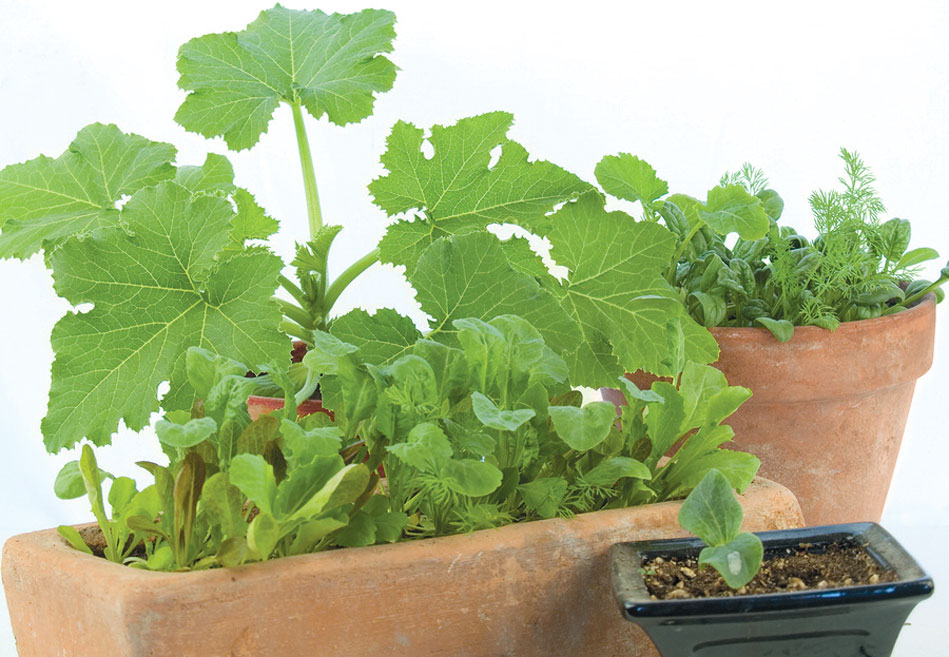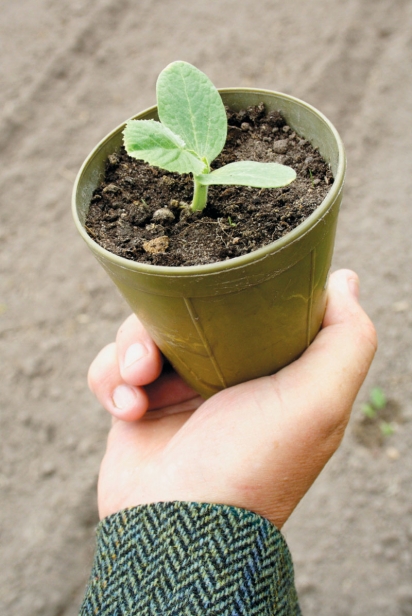Small Container Gardening, Big Results
So you want to plant a garden and grow your own food but you live in an apartment or your homeowners association prohibits gardening. Short of usurping the planters in your apartment complex or finding a neighbor with a plot of land you can shanghai, what can you do?
Most windowsills, balconies or patios make great places for your small vegetable garden. You can grow a myriad of delectable edibles in these locations in containers. Planting in containers offers several advantages and disadvantages, but if you are persistent you can have some success. The biggest advantage of your new container garden is that you can move it as you need to as the seasons change. But there are several considerations that you need to make before you get started:
Sun—Sun exposure is the most critical piece of the pie. The first thing you need to consider is the direction that your garden will face. Above the equator, the best directions for a container garden to face are east and south. The worst direction is north, which typically does not get enough sunlight to grow your groceries. A west-facing garden is challenging but somewhat plantable. That said, the west-facing garden will need special attention during the hotter part of the year. Especially in the desert Southwest, providing your plants some relief from the hot afternoon sun is essential.
It is likely that your new container garden will require daily attention especially if it is in direct sunlight, especially in the afternoon. The quickest way to kill a plant is to cook it in the direct sunlight. My suggestion is to move the pots into the shade after about 2 p.m. every day. Also think about the shade structures that might already be in your yard and use them.
Containers—There are many different containers to plant in. Your best bet is to visit the local nursery or secondhand store for some ideas. Some pots, like terra cotta, can have the tendency to wick away the moisture from the soil. You could consider sealing the inside of a pot, however make sure you know what is in the sealant as anything in that pot will likely end up in your food.
Recently I found an old concrete sink that I am using for a planter. In the past I have used wooden boxes, however they have a tendency to deteriorate over time. Metal trash cans and stock tanks make great planters. In the past I have even used old bathtubs. See how creative you can get.
The size of your planting container will dictate what you can plant, from a 6-inch pot for growing herbs on your windowsill to an old bathtub to grow just about whatever your heart desires. I have found that 15-gallon containers are adequate to grow nice selections of tomatoes, eggplants and peppers. Regardless of the size, make sure you have adequate drainage. I usually add a layer of small rocks at the bottom of the pot to facilitate this.
Soil—Soil is perhaps the biggest piece of your little garden pie. Bagged potting soil from your local nursery is probably your best choice. These mixes will have a nice balance of organic material and nutrients, and often have the added bonus of peat moss, vermiculite or perlite, which will help the soil retain water. These mixtures also come disease- and weed-free, making your growing job easier.
Plants—Ah, the best part. People often ask me what they should plant in their garden. My first answer is that growing food is like fine art: I don’t buy fine art that I don’t like and you shouldn’t grow food that you don’t like. For a great year-round planting calendar visit ediblephoenix.com to get some ideas for what and when to plant that are specific to your tastes.
I have had luck with growing many of the vegetables that most people like in containers. Tomatoes, peppers and eggplants do especially well. Plus I have had success with vining crops such as squash and cucumbers. Remember you can train them to vine up so that you can use the vertical space of your patio. Root crops such as radishes, beets and carrots will also do very well in a pot. And don’t forget the wonderful selection of herbs that we can grow here, including parsley, sage, rosemary, thyme and basil. Typically herbs are expensive in the store so by growing your own you can save a bundle. And don’t forget edible flowers like nasturtiums, which add a nice zing to your salads.
Water—Perhaps the single biggest consideration for your garden is water. Here in the desert our gardens will have a tendency to dry out very quickly. The best option is to add your containers to a drip system so that they are watered on even intervals and so you don’t forget. Check with your local hardware store, as there are several easy options to assist you with this.
Growing in pots can be personally rewarding and fruitful, it just takes some forethought and planning. In my yard at the Urban Farm I experiment all the time, and find that some things work and some don’t. Start with a 15-gallon pot or some herbs on your windowsill and discover how that works, then graduate to something bigger.
Greg Peterson owns the Urban Farm (www.urbanfarm.org), a sustainability showcase home on one-third of an acre in Central Phoenix.





